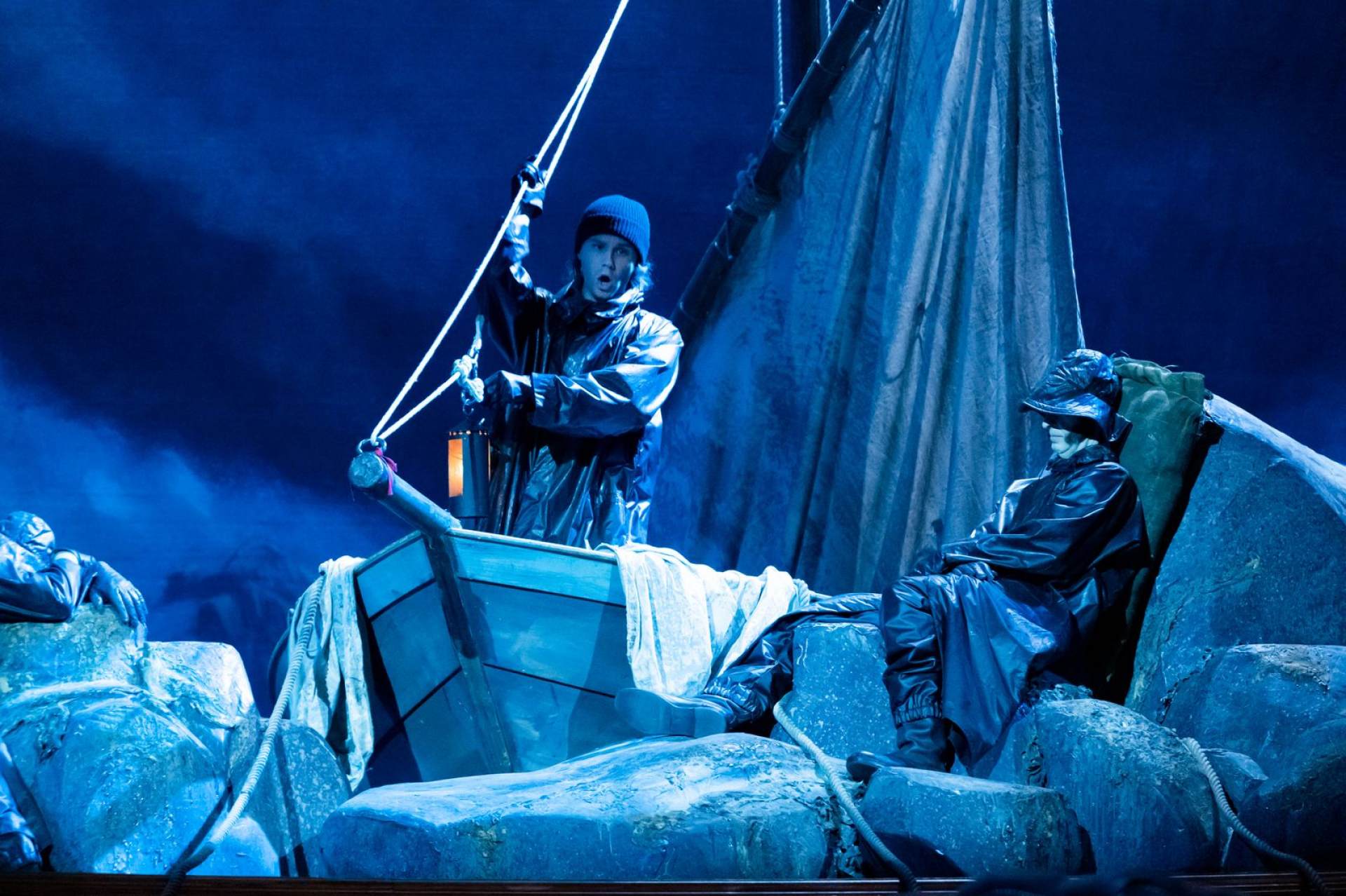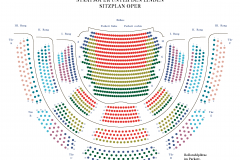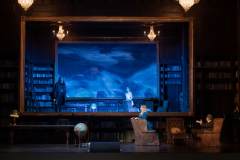The Flying Dutchman
May 2025 | ||||||
|---|---|---|---|---|---|---|
Mo | Tu | We | Th | Fr | Sa | Su |
ROMANTIC OPERA IN THREE ACTS (1843)
MUSIC AND TEXT BY Richard Wagner
Restlessly roaming the world’s oceans, going ashore only once in seven years, living in hope of finding a wife who is faithful for a lifetime, and being disappointed again and again: this is the fate of the Flying Dutchman, who has long been pursued by a curse. But when he meets the Norwegian captain Daland and his daughter Senta, his life blood is revived.
In the spirit of romanticism, the young Richard Wagner shaped the legend of the Flying Dutchman into an opera of bold music and irrepressible force. It is a dark and mysterious tale, the atmosphere of which Wagner captured so succinctly in his striking score. He unleashes forces of nature in the orchestra, while echoing folkloric music in the chorus, and the solo scenes, duets and ensembles are highly expressive. Dream and reality blur; imagination and reality can barely be distinguished. Since the Dresden premiere in 1843, »The Flying Dutchman« has sailed across the opera stages of the world, and has often laid anchor in Berlin. This production by Philipp Stölzl presents Wagner’s work as a colourful pirate story and an adventurous spiritual journey with some surprising twists and turns.
PLOT
ACT ONE
The ship of the Norwegian merchant Daland has gotten caught in a serious storm just before reaching the homeport, and thus drops anchor in a nearby cove. They decide to wait out the storm and sleep for the night, while only the steersman keeps watch. But he, too, falls asleep. In the meantime, a second ship approaches, that of the Flying Dutchman. The Dutchman asks for the hand of Daland’s daughter Senta. Daland, impressed by the riches of the Dutchman, agrees.
ACT TWO
Back home, the busy women await the arrival of their husbands. Senta asks Mary to tell her of the Flying Dutchman. Erik, Senta’s betrothed, arrives and reports of the arrival of the ship. Erik urges Senta to ask the father to approve of their marriage. Senta refuses. As a warning, Erik tells her of his dream, where he saw Senta and a mysterious seaman sink together in the ocean. The father then introduces a stranger to Senta, whom she is to marry.
ACT THREE
The seamen prepare for the wedding. Erik reminds Senta of their former intimacy and love, and that she once swore to him her constancy, but Senta vigorously denies this. The Dutchman is a witness to this conversation, and no longer believes Senta’s oath of constancy to him. Without giving her a chance to explain, the Dutchman turns to leave. Senta follows him to her death.
Program and cast
Duration: approx. 2:15 hrs without interval
Language: In German language with German and English surtitles.
Recommended age: 12 years and older
CAST
MUSICAL DIRECTOR: Pablo Heras-Casado
DIRECTOR: Philipp Stölzl
CO-REGIE: Mara Kurotschka
SET DESIGN: Philipp Stölzl , Conrad Moritz Reinhardt
COSTUMES: Ursula Kudrna
LIGHT: Hermann Münzer
THE DUTCHMAN: James Rutherford
DALAND: Falk Struckmann
SENTA: Clara Nadeshdin
ERIK: Andreas Schager
MARY: Anna Kissjudit
DALAND'S STEERSMAN: Siyabonga Maqungo
STAATSOPERNCHOR
STAATSKAPELLE BERLIN
State Opera Unter den Linden
Staatsoper Unter den Linden is one of Berlin's most prestigious opera houses, with a rich history and significant cultural impact.
History:
The Staatsoper Unter den Linden was originally built between 1741 and 1743, under the direction of architect Georg Wenzeslaus von Knobelsdorff. It was commissioned by Frederick II of Prussia and was initially named the Königliche Oper (Royal Opera). The opera house has undergone several renovations and reconstructions, notably after World War II damage. It reopened in 1984, following a major renovation.
Construction:
The original design was characterized by its Baroque style, featuring an elegant façade and a grand entrance. The building was reconstructed in the 1950s and 1980s, maintaining its classical exterior while modernizing the interior. The façade features a classic portico with six Corinthian columns and a prominent central pediment.
Interior:
The interior is known for its opulent and classical design. The auditorium is renowned for its acoustics and grandeur, with luxurious velvet seats and elaborate decorations. The stage and seating areas have been updated to meet modern performance standards while preserving historical aesthetics.
Concerts and Performances:
The Staatsoper Unter den Linden hosts a variety of performances, including operas, orchestral concerts, and ballet. It is home to the Staatskapelle Berlin, one of Germany's leading orchestras. The opera house is celebrated for its high-quality productions and its role in Berlin’s vibrant cultural scene.
JOURNEY
The Staatsoper Unter den Linden has completely barrier-free access due to its excellent public transport connections.
ADDRESS: Unter den Linden 7; 10117 Berlin
SUBURBAN RAILWAY
S+U Friedrichstraße (S1, S2, S5, S7, S25, S75)
SUBWAY
Hausvogteiplatz (U2)
Museumsinsel (U5)
Stadtmitte (U2, U6)
Unter den Linden (U5, U6)
BUS
Staatsoper (100, 245, 300)
Unter den Linden/Friedrichstraße (100, 147, 245, 300, N6)
PARKING
Q-PARK parking garage Unter den Linden/Staatsoper
Bebelplatz, 10117 Berlin
There are five electric charging stations in the parking garage. Further information can be found here.
The underground car park on Bebelplatz offers disabled parking spaces and direct access to the opera house. On entering the car park between 5.30pm and 11.30pm, the maximum parking fee is €7. To use this tariff, enter your parking ticket in one of the pay machines and the message »Theatertarif« will appear on the display. Please note that it is not possible to use the tariff if you enter the car park before 5.30pm. so it will not be shown on the display. TIP: If you pay the theatre tariff at the pay machine before the event, you can avoid unnecessary waiting after the show.

 EN
EN DE
DE IT
IT FR
FR ES
ES RU
RU JP
JP RO
RO
 Seating plan
Seating plan 


